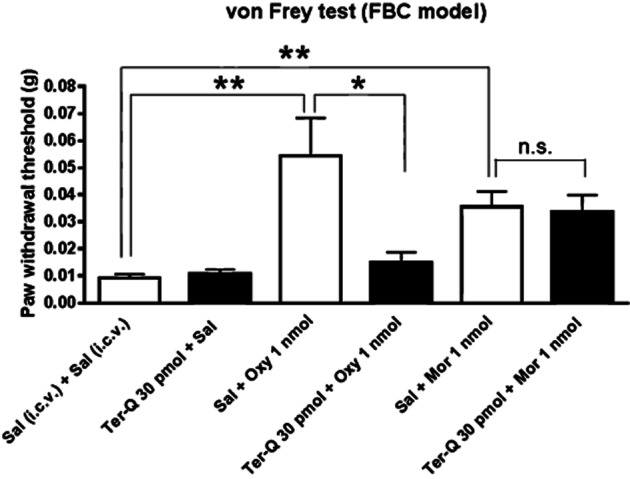Figure 1.

Antinociceptive profiles of oxycodone (Oxy) and morphine (Mor) against mechanical hypersensitivity in the FBC model. The antinociceptive effects of Oxy, but not those of Mor, were abolished by the Kir3.1 channel inhibitor tertiapin-Q (Ter-Q). Each column represents means ± SEM (n = 9–13). A comparison of all groups was performed using a Kruskal–Wallis test and Dunn's multiple-comparison test. In this graph, the antinociceptive effects of Oxy and Mor were followed by asterisks indicating a statistically significant difference between saline (Sal)-treated groups and the Oxy with Sal-treated groups or the Mor with Sal-treated groups; **P < 0.01. The distinct sensitivity to Kir3.1 channel inhibition of the antinociceptive effects of Oxy and Mor were followed by the asterisk indicating the difference betweenOxy with Sal-treated groups and Oxy with trertiapin-Q treated groups; *P < 0.05. No significance (n.s.) indicates a no statistically significant difference between the Mor with Sal-treated groups and the morphine with trertiapin-Q treated group.
